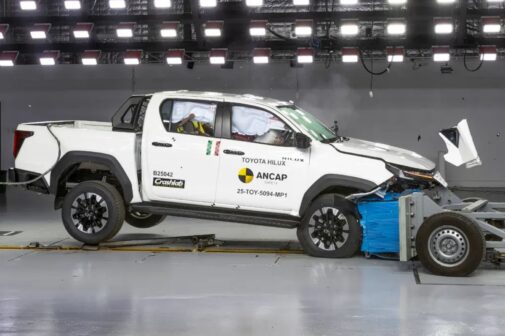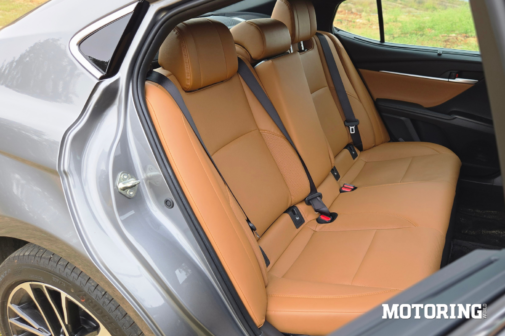Full disclosure: before I even set foot in the new Toyota Camry, I had decided I was going to like it, because I’ve been a fan of the previous-gen models. Since this is the complete opposite of what is expected of an automotive journalist, I will bear no grudges if you wish to stop reading at this point. For those willing to give me a longer rope, I thank you – read on.
Globally, the Toyota Camry been a staple in the mid-size sedan segment since forever, because of its practicality, efficiency and legendary reliability. The lower D-segment in India is all but dead, with only the Camry and the (old and stupidly expensive) Superb keeping the flag fluttering. There is a dedicated bunch of Camry buyers in this country, however, who are devoted to the car because it’s… a Toyota, essentially; they know it’ll likely outlast them. Even they will admit that the car – however reliable – didn’t exactly overflow with features, though; a proper touchscreen with Android Auto and Apple CarPlay only showed up in the year of our Lord 2021, for example, before which you had to fiddle with the most infuriating infotainment system in recent memory. For the 2025 model, Toyota has gone all-in in terms of features, and has made a few mechanical and cosmetic tweaks; how does it all pan out?
To begin with, the Camry’s refreshed front end is surprisingly good-looking; I say surprisingly because no matter how big a Toyota fan you are, you would rarely accuse one of its non-sports cars of good looks. Some may call it a bit of a hot mess, but I like it – a lot. The new grille, headlights and cheese-grater elements around the fog lamps all somehow contrive to inject a fair bit of sportiness and aggression into what has always been a rather bland car; there’s a profusion of slashes, edges and creases on the front and the bonnet, as if a slightly inebriated samurai warrior had been invited to sculpt it with his katana. The roof line is now more down-swept, and the middle of the car has been left largely as-is, with some cool new alloy wheels making an appearance. The car’s derrière has had some sleeker tail lamps slapped on, but is otherwise also much the same as the older car. Toyota is offering a rather tasty red/black colour combination, with blacked-out wheels, skirts, pillars and a small spoiler, and I’d definitely plump for this one; those with more sober tastes will likely get the single-colour variants. Many will say that this is a lazy redesign, mind you, with nothing that’s really new – but it works for me.
Almost everyone who buys a Camry does so because they wish to be supremely comfortable in the rear seat, and Toyota has ensured that these punters have even more to be happy about; the chauffeur and front passenger will likely be even more pleased, since only they get seat-ventilation, electric seat adjustment and more supportive front seats than in the previous generation. The rear passengers get reclining seats and a touch-based central console that allows them to control the audio system, the A/C and the rear blinds, and there are buttons on the side of the front passenger seat to control the seat recline; the leather seats come in a tasteful tan shade and are extremely well crafted, front and back, making this car ideal for long drives.
The new Camry is finally as feature-rich as it always should have been, but this is not to say that it’s quirk-free; I’ll get to those aspects later. The good parts first – Toyota only sells the fully-loaded variant here, so you get 12.3-inch digital instruments and touchscreen infotainment screens, wireless charging, a profusion of wired charging ports, 3-zone climate control, soft-touch dashboard and door materials, a 9-speaker JBL audio system, a sunroof, connected car tech and a raft of ADAS features under the Toyota Safety Sense suite and a multi-function leather-wrapped steering wheel, among others. There’s enough in here to keep most people happy, but now to the quirks – you get wireless Apple CarPlay, but wired Android Auto (the US-spec car is totally wireless), the sloping roof means that tall drivers and front passengers will bump their heads (the scoops in the roof at the rear ensure that rear passengers don’t face this issue), the sun-shade part of the sunroof is manually operated, some of the shiny plastic surfaces look a bit tacky, the digital instruments are too complicated to look at and the steering-mounted controls are a mess, with too many buttons to configure. On the plus side, the A/C controls are manual and not touch-based, and there’s (gasp) an actual, physical volume control knob. Are there better cabins out there, some of them for less money? Yes, there are. Will that make a difference to a Camry buyer? Likely not.
All Camrys are now hybrid only, and the new car has the same 2.5-litre, 4-pot petrol engine as the older one, but with more power and a 5th-generation hybrid system and battery. With a combined 227 bhp (going to the front wheels) and 22.5 kgm, the car is noticeably quicker off the line and much more lively in nature to drive, which is a good thing, because the older model needed more flogging to get it going; a 0-100 kph time of 7 seconds is pretty good for a car as heavy as this. Acceleration is smooth throughout, and the switch from electric to petrol power is totally seamless, with the added plus of engine refinement also having gone up (the previous car could get pretty raucous). The e-CVT is a much-improved unit, too, and although the rubber band effect is still present, it’s not as pronounced under hard acceleration; at city speeds, this car is absolutely effortless to drive. You get paddle shifters, manual mode on the gear shifter and three drive modes (Eco, Normal and Sport) but to be honest, these make very little difference to the way the engine and transmission work. This is a no-nonsense kind of car, enjoyable to drive without being exuberant, and I’m sure it would be up to some hooliganism as well, if such a mood caught you (whether the tyres would keep up is another matter).
The back-seat ride quality is what is most important in the Camry, and true to form, it’s excellent – and more accomplished than the older Camry. Bumps are soaked up and spat out, and it’s only the really large craters that will cause dull (or sharp) thuds; ground clearance is a decent-but-not-great 150mm, so most speed breakers can be handled without having to crab over them. You’re barking up the wrong tree if you expect sportscar handling from this car, but that said, it goes where you point it quite confidently and is poised under reasonably hard cornering; the steering wheel is rather dull, but it gets the job done, and the brakes have more than enough bite to haul in all that weight. There are a host of ADAS features as well, but as always, I prefer to turn them all off and make my own mistakes if necessary; Indian traffic conditions are far too chaotic for them.
I really like this car, but then I made no bones about it right at the start. It’s an improvement in every way over the previous generation car, and continues to be an absolutely wonderful automobile, with some caveats. Sure, paying close to Rs 50 lakh for a Toyota may sound nuts, but when you consider how accomplished it is, and how affordable it will be to live with compared to cars from the luxury brands, it suddenly makes a whole lot of sense. It’s bland, but it’s a very enjoyable level of bland, and I would certainly not hesitate to recommend it.
























